Ranthambore National Park: A Mesmerizing Safari Adventure
Discover the Wild Wonders of Ranthambore National Park
Ranthambore National Park, nestled in the Sawai Madhopur district of Rajasthan, India, stands as a premier wildlife sanctuary celebrated for its vibrant tiger population and diverse ecosystem. Visitors planning a trip to this iconic destination should consider key travel details to ensure a hassle-free adventure.

Where is Ranthambore National Park?
Located approximately 130 kilometers from Jaipur, the capital of Rajasthan, Ranthambore is easily accessible through various transportation options.

Fly to Jaipur for a Quick Start
The closest airport to Ranthambore is Jaipur International Airport (JAI), situated about 180 kilometers away. From Jaipur, travelers can opt for a taxi, bus or train to reach Sawai Madhopur, the gateway to the park. Jaipur to Sawai Madhopur Schedule
Railways: The Convenient Option
Sawai Madhopur Railway Station (SWM), just 10 kilometers from the park, serves as the nearest railhead. It connects seamlessly to major cities like Delhi, Mumbai, and Jaipur, with frequent express and superfast trains stopping here.
Hit the Road for a Scenic Drive
Ranthambore is well-connected by a network of national and state highways. Regular bus services and private cabs are readily available from Jaipur, Delhi, and nearby cities, making road travel a convenient choice.
Top Hotels Near Ranthambore National Park for an Unforgettable Stay
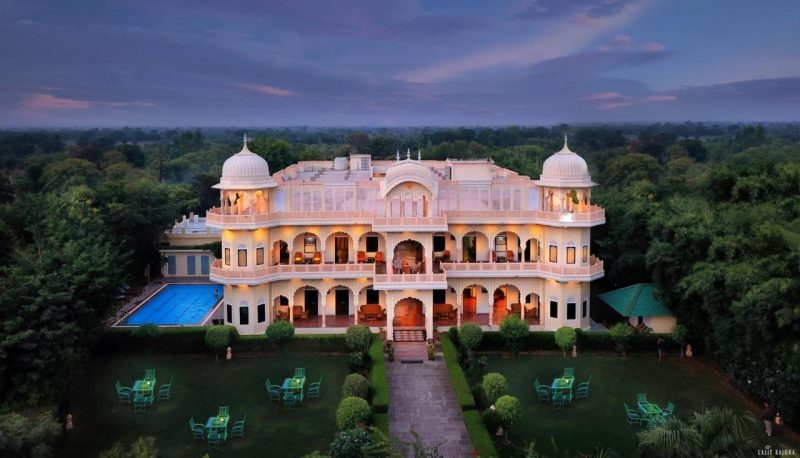
Selecting the ideal hotels near Ranthambore National Park can elevate any trip, whether travelers seek luxury, convenience, or a charming rustic escape. Early bookings are highly recommended, as these accommodations remain in high demand throughout the year.
Ranthambore National Park, one of India’s most celebrated wildlife sanctuaries, draws nature lovers and tiger enthusiasts from across the globe. To make the most of this adventure, finding the right place to stay is essential. A variety of exceptional hotels near the park provide both comfort and unique experiences, ensuring a memorable getaway for all visitors.
Best Time to Explore Ranthambore National Park: A Seasonal Guide

Winter Wonders: October to March:The winter season, spanning from October to March, is considered the prime time to visit Ranthambore National Park. With temperatures ranging between 10°C and 30°C, the weather remains pleasant, creating the perfect conditions for safari tours and wildlife exploration.
During this period, the park’s lush greenery and abundant water sources attract a variety of wildlife, including the iconic Bengal tiger, elusive leopards, and an array of bird species.
Summer Safaris: April to June:While summer months bring intense heat, with temperatures often exceeding 40°C, they also offer unique opportunities for wildlife enthusiasts. From April to June, animals are frequently spotted near waterholes, increasing the likelihood of tiger sightings.
Tourists and families seeking to escape the scorching midday heat should plan their safari excursions during the early morning hours or late afternoon.
These times not only offer a more comfortable experience but also reveal nature’s beauty at its finest—whether it’s the serene glow of dawn or the golden tones of twilight.
Monsoon Closure: July to September: The monsoon season, lasting from July to September, brings heavy rains and essential maintenance work, leading to the park’s temporary closure. However, when the park reopens in October, visitors are greeted with rejuvenated landscapes and vibrant flora, offering a refreshed perspective of Ranthambore’s natural beauty.
Why Winter Stands Out: For a comprehensive and enjoyable experience, winter emerges as the best season to explore Ranthambore National Park. The combination of pleasant weather, thriving biodiversity, and scenic beauty makes it an unforgettable destination for tourists and families alike.
Explore Ranthambore’s Ten Unique Safari Zones
Ranthambore National Park is separated into ten different areas. Each area has its own special mix of land features and chances to see various animals. Zones 1 and 2 are renowned for their frequent tiger sightings, making them a prime choice for visitors eager to spot these majestic predators in their natural habitat.

Padam Lake: A Birdwatcher’s Paradise
Zone 3 is home to the stunning Padam Lake, a haven for bird enthusiasts. This picturesque spot also offers the chance to see crocodiles basking along the lake’s serene banks, creating a perfect setting for nature lovers.
Raj Bagh Ruins: Scenic Beauty Meets Big Cats

Zone 4 boasts the iconic Raj Bagh ruins, combining historical charm with frequent tiger sightings. This zone offers a captivating mix of scenic beauty and thrilling wildlife encounters, making it a favorite among visitors.
Tiger Hotspots: Zones 5 and Beyond
Zone 5 mirrors the tiger activity of Zones 1 and 2, providing another excellent opportunity for spotting these elusive creatures. Meanwhile, Zones 6 (Kundal), 7 (Chidikho), and 8 (Balas) offer a quieter, more intimate safari experience.
These less-crowded zones are teeming with diverse flora and fauna, including sloth bears and leopards, perfect for those seeking a tranquil wildlife adventure.
Off-the-Beaten-Path Adventures
Zones 9 (Kuwal Ji) and 10 (Anatpur) lie on the park’s periphery, offering breathtaking vistas and the excitement of exploring less-traveled paths. These zones provide a sense of adventure and the chance to connect with nature in a more secluded setting.
A Safari Adventure Like No Other

Each zone in Ranthambore National Park promises a unique and unforgettable safari experience. From tiger sightings to serene landscapes and diverse wildlife, this park ensures every visitor leaves with cherished memories of their journey into the wild.
Ranthambore National Park: Your Gateway to Untouched Beauty
Booking and Permits: Guide to Booking Ranthambore National Park Safaris
Securing permits for Ranthambore National Park is a must for anyone eager to experience its breathtaking landscapes and incredible wildlife. Wildlife enthusiasts can conveniently book entry permits online through the official Rajasthan government tourism website or the park’s dedicated portal.
Early booking is highly recommended, especially during peak seasons, to avoid disappointment.
Safari Options for Every Explorer
The park offers two main safari options: jeep safaris and canter safaris. Each provides a unique way to explore the park’s rich biodiversity, giving visitors a chance to witness its majestic tigers and other wildlife up close.
For those interested in photography or filming documentaries, special permits are required to ensure the park’s natural beauty is preserved.
Stay Updated for a Smooth Adventure
Visitors are encouraged to review the latest guidelines and follow all regulations to make their trip seamless and enjoyable. For accurate and up-to-date information on booking procedures, permit fees, and other details, always rely on official sources.
A well-planned visit to Ranthambore promises an unforgettable journey into the heart of nature.
Things to Do Near Ranthambore National Park
Discover the Historic Ganesh Temple

Exploring the Ganesh Temple and Ranthambore Fort is an unforgettable experience for tourists and families alike. The journey to the top may appear challenging at first, but the breathtaking views from the summit make every step worthwhile.
This ancient temple exudes a peaceful and spiritual ambiance, offering visitors a serene escape from the hustle and bustle of daily life. A visit to this iconic site is a must for anyone traveling to Ranthambore.
Discover the Ancient Marvel of Chand Baori
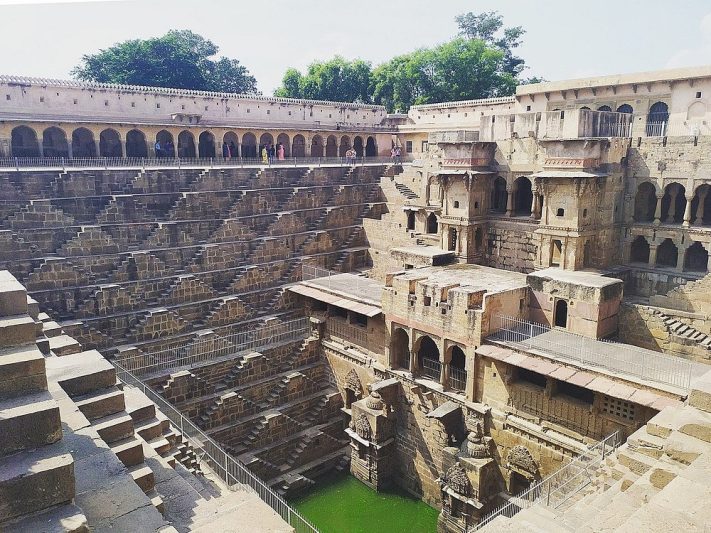
Nestled in the charming village of Abhaneri, just 95 kilometers from Jaipur, Chand Baori stands as a mesmerizing architectural masterpiece. This ancient stepwell features an incredible 3,500 intricately carved steps, spiraling down over 100 feet into the earth across 13 levels. Recognized as one of India’s most extraordinary stepwells, it continues to captivate visitors from all corners of the world.
Right next to Chand Baori lies the revered Harshat Mata Temple, a site steeped in cultural and spiritual importance. Both the temple and the stepwell date back over 1,200 years, offering a fascinating glimpse into Rajasthan’s rich and vibrant history. Together, they form a must-visit destination for history enthusiasts and culture seekers.
Unveiling the Hidden Gem: Village Women Crafts

Village Women Crafts stands as a testament to artistry and tradition, offering an enriching experience for tourists and families alike. This extraordinary cooperative is renowned for its masterful creations, particularly its breathtaking wool and silk carpets.
Beyond these intricate designs, the cooperative also features an impressive array of needlework, fabric art, shawls, quilts, and wall hangings. Each piece tells a story, beautifully capturing the vibrant cultural heritage of the region.
Discover the Tranquil Beauty of Surwal Lake
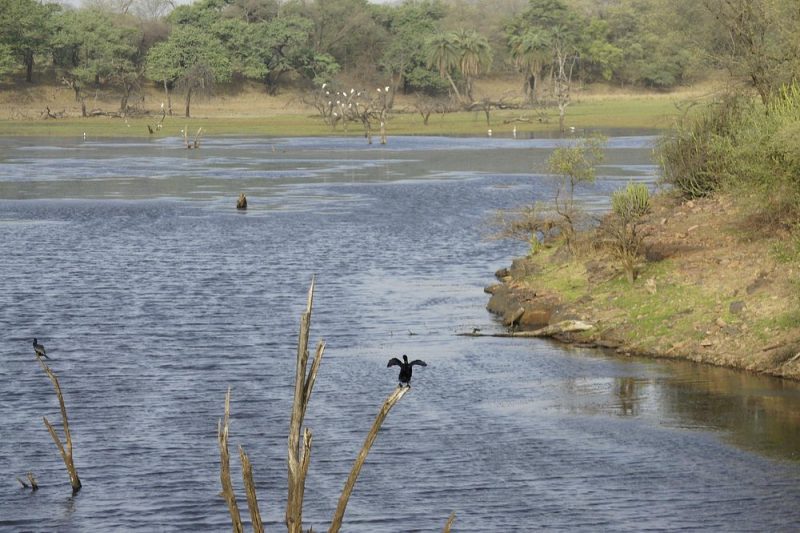
Surwal Lake is a peaceful & beautiful place located just 25 kilometers (about 15 miles) away from Ranthambore. It is a wonderful spot for people who enjoy being in nature and watching birds. The lake provides a calm and tranquil environment where visitors can relax and appreciate the natural surroundings.
This hidden gem transforms into a paradise for migratory birds during the winter months, offering visitors a unique opportunity to witness the beauty of nature up close.
The perfect time to experience the charm of Surwal Lake is between November and March. During this period, the surrounding landscape bursts into life, creating a vibrant and picturesque setting ideal for tourists and families seeking a peaceful getaway.
Ranthambore National Park: Awe-Inspiring Wildlife Awaits
Conclusion
Ranthambore National Park promises an extraordinary safari experience, combining breathtaking natural beauty, diverse wildlife, and a touch of historical charm.
The park’s varied landscapes, from lush forests to serene lakes and open grasslands, create an ideal environment for a wide range of wildlife.
Visitors can spot majestic leopards, elusive hyenas, and an array of exotic bird species. Each safari unveils the intricate harmony of nature, showcasing how every creature contributes to the ecosystem’s delicate balance.
A visit to Ranthambore National Park is more than a simple getaway—it’s an unforgettable journey into the heart of nature. This immersive experience captivates the soul, leaving visitors eager to return and uncover more of its wonders.
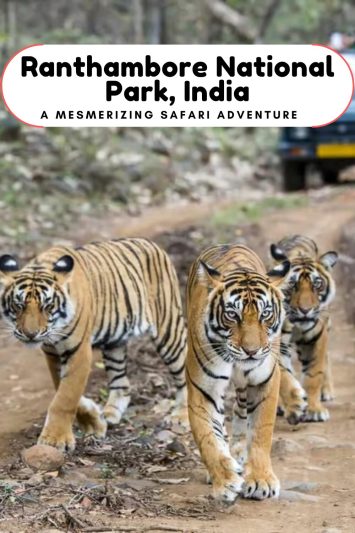





Be the first to comment